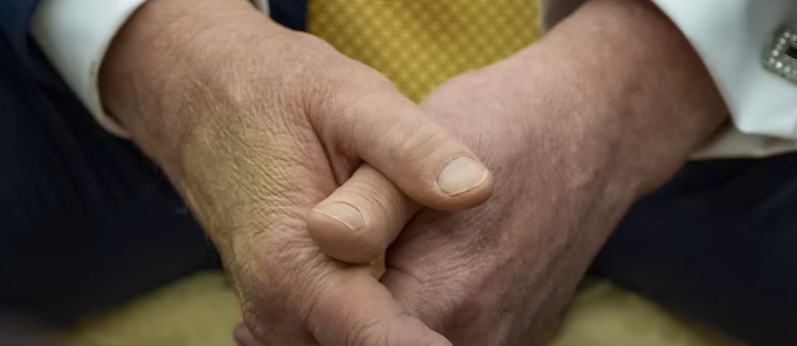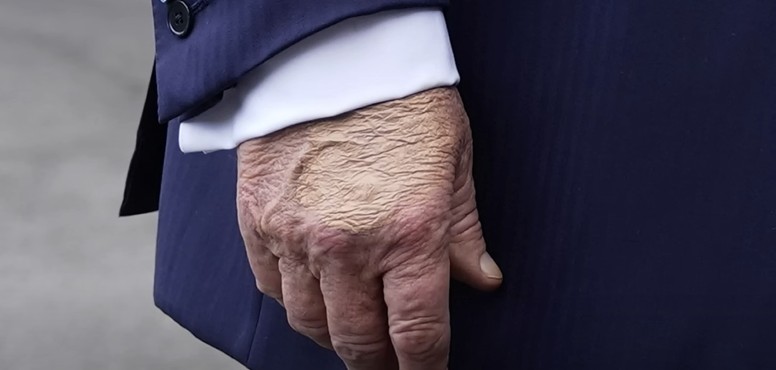In a rare moment of medical transparency, the White House has confirmed that former President Donald Trump diagnosed with chronic venous insufficiency (CVI), a condition characterized by poor blood return from the legs to the heart. The diagnosis was announced during a White House press briefing following public speculation over visible leg swelling and bruising on the back of Trump’s hand.
Swelling Prompts Evaluation
According to White House Press Secretary, the president noticed mild swelling in his lower legs in recent weeks, prompting a comprehensive medical evaluation by the White House Medical Unit. “In an effort of transparency,” the president’s physician issued a detailed statement on Trump’s health, outlining the tests performed and the diagnosis made.
Among the tests conducted were bilateral lower extremity venous Doppler ultrasounds, which confirmed the presence of chronic venous insufficiency. This condition, while benign and common, is particularly prevalent among individuals over the age of 70. President Trump, who recently turned 79, fits this demographic.


What Is Chronic Venous Insufficiency?
CVI occurs when the valves in the leg veins fail to function properly, making it difficult for blood to return to the heart. This can lead to symptoms such as leg swelling, heaviness, discomfort, and in some cases, visible varicose veins.
Emergency physician Dr. Jeremy Fowles explained that CVI is not unusual in older adults, especially those who are overweight or have sedentary lifestyles. “It’s a relatively normal part of aging,” said Fowles. “But it’s important to rule out more serious vascular conditions.”
No Signs of Deep Vein Thrombosis
After trump diagnosed, a primary concern with symptoms like swelling is deep vein thrombosis (DVT), a condition where dangerous blood clots form in deep veins—most often in the legs. Fortunately, the Doppler ultrasound ruled out DVT and arterial disease, offering reassurance that the president is not at immediate risk of complications such as pulmonary embolism, which can occur if a clot travels to the lungs.
Blood Work and Heart Tests Clear
In addition to the ultrasound, President Trump underwent a battery of lab tests including a complete blood count, metabolic panel, coagulation profile, D-dimer, and cardiac biomarkers. All results reportedly fell within normal limits.
An echocardiogram was performed and showed normal heart structure and function. The White House physician reported no signs of heart failure, kidney dysfunction, or any systemic illness.
Bruising on Hand Linked to Aspirin and Handshakes
Recent images of President Trump showing bruising on the back of his hand led to public speculation. The White House explained that the bruising was the result of minor soft tissue irritation caused by frequent handshaking combined with the use of aspirin—a standard therapy for cardiovascular disease prevention. The condition was deemed benign.

Expert Opinions on Risks and Management
Both Dr. Fowles and cardiologist Dr. Bernard Ashby weighed in on the implications of the diagnosis. Although CVI is not life-threatening, it may indicate underlying conditions that warrant ongoing observation. Dr. Ashby emphasized that Trump’s age, obesity, lack of regular cardiovascular exercise, and frequent travel could compound circulation problems.
He also raised the possibility of sleep apnea—a condition common in individuals with Trump’s body type—as a contributing factor to increased pulmonary and cardiac pressure, which could aggravate venous return.
“Even though this is being described as a benign condition,” Ashby said, “it’s important to understand why the insufficiency is happening. It could be a symptom of other stressors on the circulatory system.”
Trump diagnosed with chronic venous insufficiency- Ongoing Monitoring Advised
While Trump’s current health condition appears stable and non-life-threatening, physicians agree that ongoing medical monitoring is important—especially given his age, weight, and demanding lifestyle.
CVI is typically managed with compression stockings, elevating the legs, regular exercise, and maintaining a healthy weight. In more advanced cases, medical procedures such as vein ablation or sclerotherapy might be considered.
For now, the White House says President Trump remains in excellent health and continues his regular schedule. However, as Dr. Ashby noted, “a benign diagnosis today doesn’t mean we shouldn’t stay vigilant about what might lie beneath.”
Wrapping up
The public disclosure of Trump diagnosed with CVI offers a glimpse into the behind-the-scenes vigilance of the White House medical team. While the condition itself is not alarming, it serves as a reminder of the importance of proactive care in aging leaders—and in older adults generally.
As more details are expected from the White House, both the public and medical experts will be watching closely for any signs that this diagnosis may be the start of a broader health narrative.
Stay updated with UState Pulse.